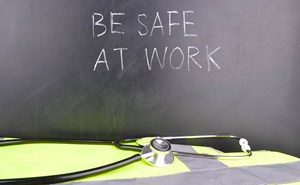Like it or not, a wave of “highly focused” inspections conducted by the Occupational Safety Health Administration (OSHA) is coming. In an enforcement memo released last week, OSHA announced that it will engage in a three month campaign (March 9 to June 9) to encourage hospitals and skilled nursing facilities that treat COVID-19 patients to take the “necessary steps to protect their workers against the hazards of COVID-19.” These inspections will account for roughly 15 percent of all inspections in a given region and will focus on those facilities that have previously received a COVID-19 citation.
OSHA has instituted a series of COVID-19 safety measures throughout the pandemic. Most notably, OSHA tried to implement a requirement that businesses with over 100 employees vaccinate or test their workers. However, that mandate was invalidated by the Supreme Court in January. Further, last June, OSHA enacted a temporary emergency safety standard for health care facilities, which required them to take a number of different steps to protect their workers from COVID-19. These actions included, among others, developing an COVID-19 plan to minimize the risk of transmission of COVID-19 to employees, creating physical barriers to keep people six feet apart, training all employees to ensure understand how COVID-19 is transmitted, and establishing a log of all instances where any employee contracted COVID-19. Last December, OSHA announced a halt to enforcement of that standard since it was meant to be temporary, and the agency hadn’t yet implemented a permanent COVID-19 safety standard.
Interestingly, although the temporary standard is technically no longer being enforced, the focus of these new inspections seems to suggest differently. Besides determining whether the facilities have corrected previously cited COVID-19-related violations, the OSHA inspectors will be checking to see if facilities are meeting many of the same requirements listed in that standard. Specifically, the inspectors will be: making sure that facilities have implemented a COVID-19 plan, verifying the existence and effectiveness of all COVID-19 control measures, evaluating facilities’ COVID-19 logs, and reviewing facilities’ procedures for conducting hazard assessments and protocols for personal protective equipment (PPE) use. OSHA inspectors will also perform “limited, focused walkaround of areas designated for COVID-19 patient treatment or handling (common areas, walkways, and vacant treatment areas where patients have been or will be treated), including performing employee interviews to determine compliance.”
While ensuring that health care facilities are keeping their workers safe is important and a core responsibility of OSHA, some of you may be questioning the timing and appropriateness of these inspections. Many health care facilities are currently experiencing severe staffing shortages, and OSHA inspections may require these facilities to divert some of their staff away from patient care for the duration of the visit or even longer as they deal with any necessary follow-up actions. I don’t think it’s unreasonable to consider the unintended consequences of these inspections, including whether they will affect the ability of some of these facilities to care for their patients for a non-insignificant period of time.
We also must consider the opportunity cost of OSHA’s continued heightened focus on COVID-19. Unfortunately, it appears that OSHA can’t walk and chew gum at the same time. Reportedly, the top regulatory priority for OSHA is to create a permanent COVID-19 safety standard, and all other regulatory initiatives are being set aside for now. This includes OSHA’s work on developing a health care workplace violence protection standard. I was excited to tell you all recently that that we were planning on having an emergency physician participate in an OSHA panel early this year that would provide input on a violence protection standard. Now, I regret to report that the OSHA panel has been indefinitely delayed.
I’m not trying to argue here that OSHA (or other federal agencies) should stop trying to protect the public from COVID-19. However, what I am trying to say is that, in the case of OSHA at least, federal agencies can and should focus on more than one priority at once. Deciding to delay its work on a violence protection standard will have serious consequences. I have focused multiple Regs and Eggs blogs on the rise of violent episodes in the emergency department, especially recently during the COVID-19 pandemic. OSHA must be doing more to address this issue—and since the increase in incidents seems to be directly correlated with COVID-19 (and all the public misperceptions about the virus), it would make logical sense for the agency to do so. ACEP strongly supports the establishment of an OSHA standard that would require health care employers to implement workplace violence prevention plans that protect health care and social service workers from assaults. Since OSHA has been so slow to act, we have supported legislation, the “Workplace Violence Prevention Act for Health Care and Social Service Workers” (H.R. 1195), that would compel OSHA to move its regulatory process along. The bill was passed by the U.S. House of Representatives last April, and we hope that it is taken up and approved by the Senate.
I will continue to keep you all apprised of work being done on OSHA on COVID-19, workplace violence, and other issues. In the meantime, I hope that OSHA changes its tune and decides to commit resources to other areas besides COVID-19 that garner immediate attention.
Until next week, this is Jeffrey saying, enjoy reading regs with your eggs!






